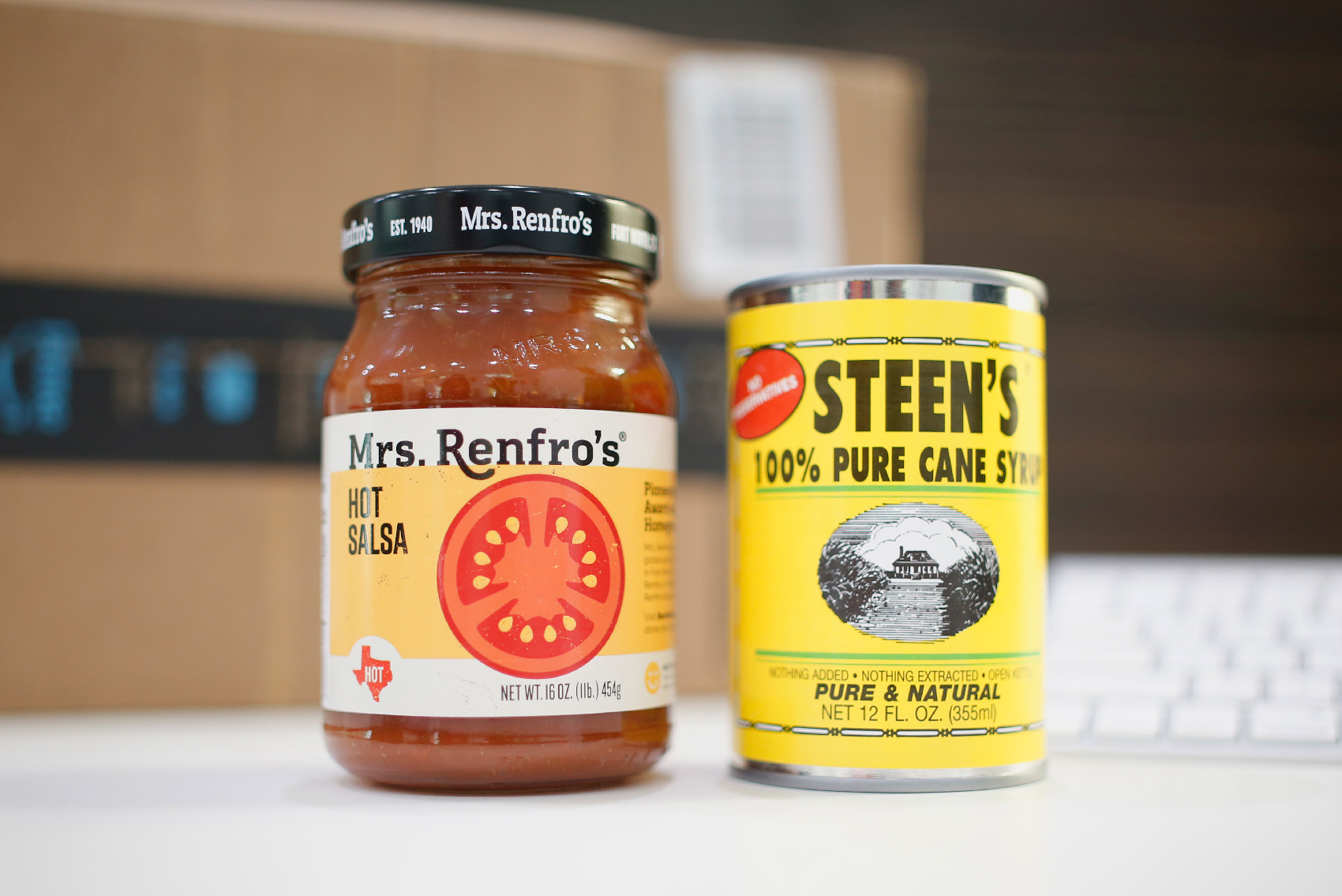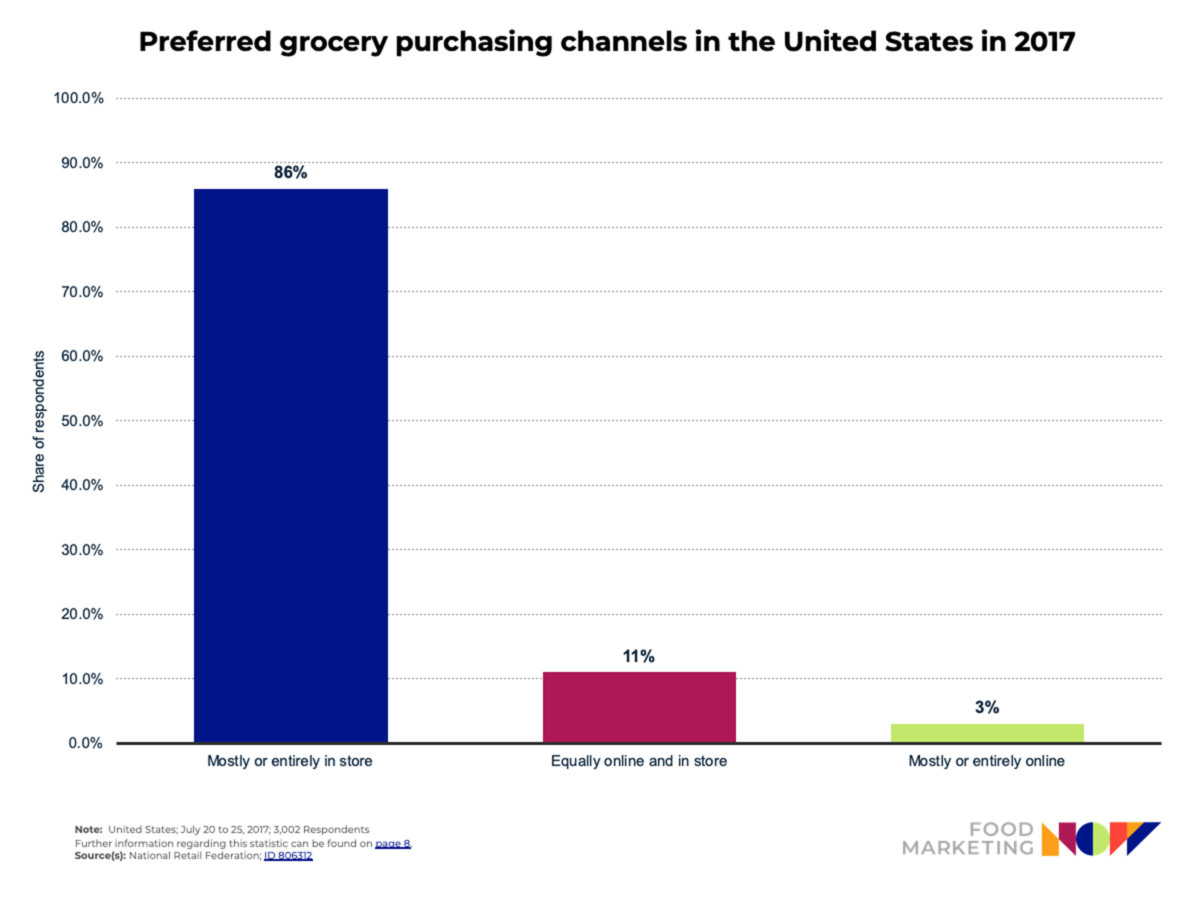
How Brands Can Use Online Grocery Sales to Grow Retail
Discover ways that brands use online grocery sales to help retail sales while building a growing audience of brand-loyal online buyers.
You may be reading this expecting yet another “sky is falling” article. You know, the kind that boldly declares e-commerce sales are going to eclipse retail in the grocery industry. Have no fear; you won’t find Chicken Little here. On the contrary, in 2017, a survey by the National Retail Foundation found that 86% of respondents preferred to mostly or entirely purchase groceries in-store. Only 11% say they prefer to buy equally online and in-store, leaving only 3% of the respondents who buy mostly, or entirely, online. Even though it isn’t a critical mass, you can’t ignore the growth of food and beverage e-commerce sales. They are still expected to grow from $15 million to $28 million by 2022. The key to your success is finding ways that e-commerce can help augment in-store sales while building a growing audience of brand-loyal online buyers.

We spoke to two widely distributed retail food brands, Mrs. Renfro’s® and Steen’s Cane Syrup, both of which have been in the online grocery game for over a decade.
Mrs. Renfro’s started in the early 1940s and has since grown to be distributed in all 50 states and internationally in seven countries. Their brand has over 30 products, including salsa, relish, peppers, cheese dips and barbecue sauces.

Steen’s Cane Syrup started in 1910 and grew to become a Southern icon and is still sold in its bright yellow label in stores throughout the south and nationwide online.

We spoke with Doug Renfro, grandson of the original owners and current president of Renfro Foods, and Janice LeBlanc, marketing director at Steen’s Syrup, to discuss how they see e-commerce and retail working together.
Online Buyers Are Different Consumers and Knowing the Difference Is Important
Both brands have a good sense of who their target consumer in the store is — and both admitted that their online buyer is a little different than the average consumer.
“Our products have been sold online for almost 20 years, and we know that it is a different consumer than what we find in the store.”
Janice LeBlanc, Marketing Director, Steen’s Cane Syrup
The most common trait is that buyers are fiercely brand loyal. These customers often take additional steps to buy online than simplify finding the product in the local grocery store. Smart brands lean into this fact by cultivating these loyal customers to buy often. Using channels like email marketing and social media, brands have the opportunity to send these customers additional content, recipes and promotions to keep them engaged. Observing this audience proves beneficial when testing new products or flavors or merely asking questions about which direction the brand should take to best grow its offerings. These consumers respond exceptionally well to offers that give them exclusive offers or rewards them for brand advocacy. Encourage them to leave reviews online about your products to entice new consumers to try your products.
Forget What You Know About Your “Best Sellers”
Most food and beverage brands that had strong retail sales struggle with launching their own e-commerce stores as they see less than stellar sales from their traditionally best sellers in-store. Don’t get discouraged as this is typical of most online grocery products.
“It can be difficult to guess what will sell best online. Actually, not as much difficult as impossible.”
Doug Renfro, President, Mrs. Renfro’s®
Mrs. Renfro’s, like many other brands, found that what sold the best were products that weren’t easily found widely in-store or were unique to the marketplace. If consumers have to drive to a different store than their weekly grocery store to find the product, they are easily swayed to buy online. This isn’t surprising as data from AYTM in 2017 showed that 84.6% of people said they purchase groceries online for the sake of convenience, and 46.9% said access to unique products was their key motivator.

Almost 50% of shoppers are also looking for the ability to customize their orders online. Experimenting with giving consumers options on their purchase can increase online sales. This could mean giving shoppers greater options in pack-size, bundled products or bulk-packaging could increase a customer’s average order value and mean greater sales. Use other information such as retail cart data to see which products people regularly buy together and consider offering kits of these products online.
The Myth that Online Sales Will Hurt Your Distribution
It may seem at first that selling your products online could hurt in-store sales or, worse, risk damaging broker and distributor relationships, but they can actually help each other. If you are looking to continue expanding your retail growth, e-commerce can be a great way to showcase real product interest to brokers and grocery buyers. Review online sales by location and seek out locations just outside of your current distribution reach. A broker will be much more inclined to test you on the shelf if they know that there are already people buying your products in their market.
“We are being rediscovered by a younger audience online. This is happening in places outside of our mostly-southern states’ distribution. We are seeing online sales in Portland, Chicago, Denver and Austin.”
Janice LeBlanc, Steens
Look at online and in-store as simply different distribution channels and not places to introduce premium pricing. While charging more for your product online may seem like the best idea to cover additional costs like shipping and fulfillment, it could end up frustrating in-store consumers and brokers. Renfro advises that brands “avoid the temptation to drop prices online. It is just going to piss off retailers.”
E-commerce can also help increase distribution in foodservice. If you have an engaged and loyal following online, brand advocates or influencers can help spread your product to restaurants and chefs interested in new products through platforms like Facebook, Instagram and Pinterest. LeBlanc remarked that Steen’s found their website was especially helpful with growing foodservice distribution as “chefs were able to purchase on our online store to try the products” before seeking foodservice distribution.
Online Plus Retail Not Versus
By looking at e-commerce as just another distribution channel versus a challenger to retail sales, brands can find ways to leverage each audience to increase sales. It may even help grow products that don’t perform as well on the shelf as they do online. When brands use e-commerce sales data, like where consumers are coming from and what they are purchasing, they can find ways to enhance or expand in-store sales. So if the sky actually does fall in years to come — you won’t be scrambling to catch up.

